Where kamikaze pilots sent last signals
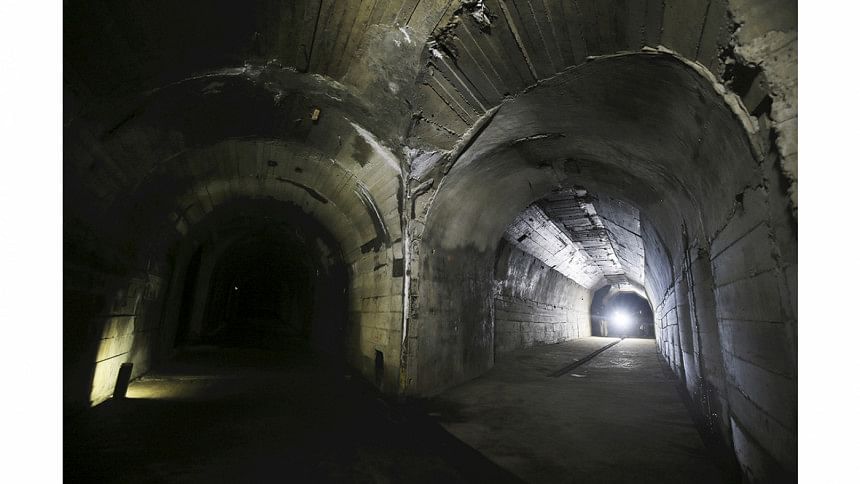
Hidden beneath the greenery and school buildings of Keio Universitys Hiyoshi campus in Kohoku Ward, Yokohama, is the former command center of the Imperial Japanese Navys Combined Fleet. The fleets command centre was originally found on flagships - like the battleships Mikasa and Yamato - from which an admiral could direct naval operations. But as World War II progressed, Japans military power started to wane. With only a few lead ships left, the navy had no choice but to transfer the command centre to land.
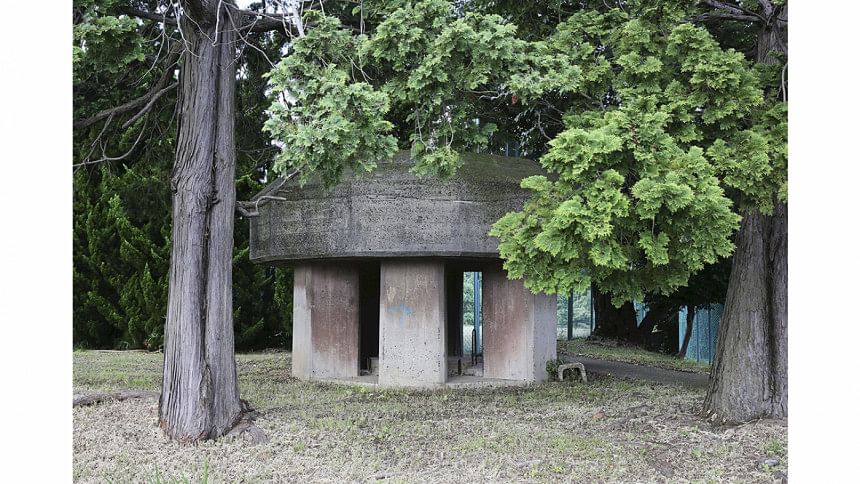
Keio Universitys Hiyoshi campus was selected due to its location on a hill, a distinct feature that allowed for optimum radio reception. In September 1944, the command centre was transferred to a dormitory on the west side of campus, and a 2,600-metre-long tunnel was dug under the nearby hill. From the confines of this underground bunker, which offered shelter from US bombings, navy officers resumed their strategic planning and decision-making.
The university organised a public tour of the Hiyoshi tunnels on June 23. The entrance to the historic site can be found next to a volleyball court on the southeast side of campus.
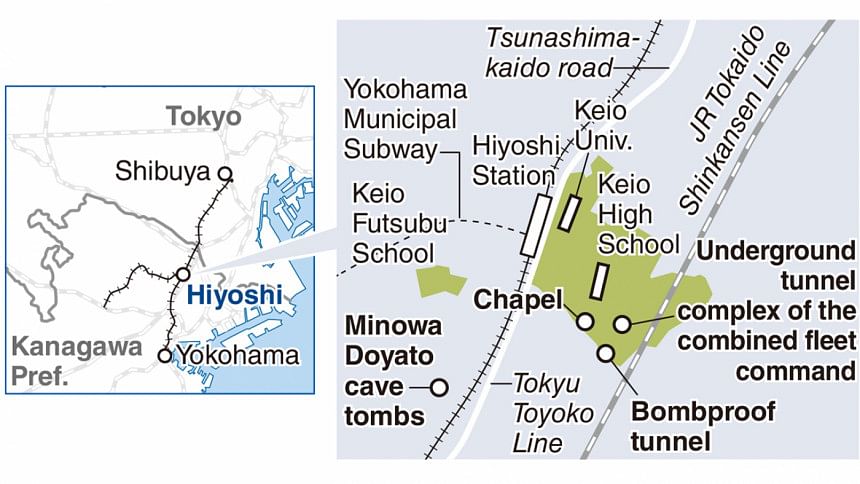
Inside the tunnel, the air is cold. In fact, the temperature is a whole 5 C lower than that outside. You need the help of a flashlight to walk down an incline until you reach your destination 30 metres underground. At the end of the journey, you discover a concrete bunker containing many rooms connected by a network of three-metre-wide corridors. Each was given a different moniker, such as the "Admirals Office," the Operations Room and the "Code Room."
One of those compartments was known as the "Radio Room." It was used to receive encoded status messages from naval ships in battle.
We learned that Japan was losing the war, for example with the Battle of Okinawa. "It was devastating for us," said 84-year-old Ichiro Hirata of Kita Ward, Tokyo. A former naval officer in charge of decryption, Hirata was assigned to the naval command at the age of 14 in June 1945, just before the wars end. Back then, the tunnel was brightly lit with fluorescent lights, and the team deciphered code around the clock in four shifts, he said.
On Aug 6, 1945, they received an encoded message from the Imperial Headquarters that read: "New bomb dropped on Hiroshima. Grave damage." As they continued deciphering, they found out that a second atomic bomb had hit Nagasaki. Talking about the contents was prohibited, but the decoders whispered to one another, "Japan might be done for."
On August 15, everybody except those on duty were summoned at noon and told to line up in front of a radio outside the tunnel. The cicadas were chirping so loudly they could hardly hear the Emperors voice as he read the Imperial Rescript on the Termination of the War. One of their superiors later informed them that Japan had been defeated.
They spent roughly the next two weeks burning telegrams and decryption manuals. "I felt the long hours that I had sacrificed at night, memorising codes instead of sleeping, likewise burning away to nothing," Hirata said.
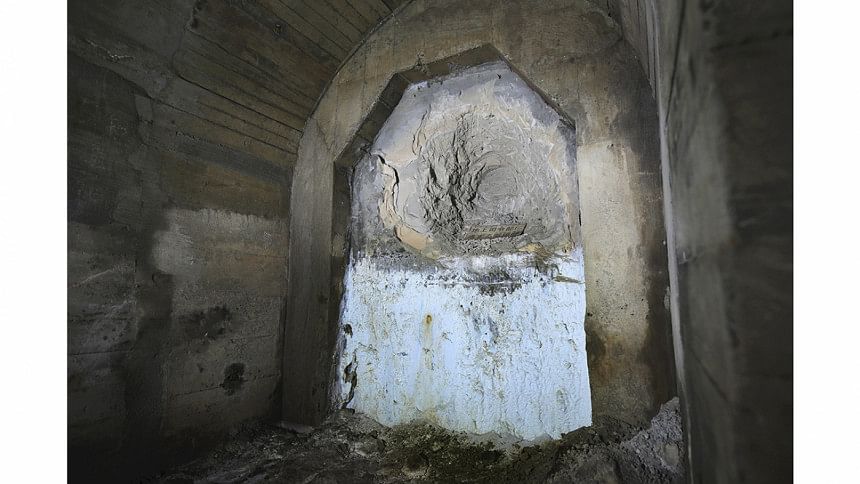
Access to the Hiyoshi tunnels is normally restricted. However, the Association to Preserve the Hiyoshidai Tunnels, a local civic group, has received permission from the university to conduct public tours once a month.
The associations chairman is Takeshi Akuzawa, 51, a teacher at Keio Senior High School. He said the command centre used to receive messages from kamikaze pilots. When kamikaze planes approached enemy ships, their pilots would continuously transmit dah in Morse code. When that sound went dead, it meant that the pilots were gone, too.
One of the entrances to the tunnels was destroyed two years ago to develop residential land.
"Orders for suicide missions were issued here," Akuzawa said. "The underground bunker has to be preserved to teach younger generations about the reality of war."
Remnants of military history Keio Universitys Hiyoshi campus was built in 1934. It covers about 430,000 square metres, or nine times the area of Tokyo Dome. A concert hall and a gym can be found on campus today, as well as historically important buildings and artworks.
Building No. 1 is currently used by Keio Senior High School. On one of its walls is a relief showing the date of its construction according to the Gregorian and Japanese Imperial calendars, 1934/2594.
Below the relief is a cup on which a world map is engraved. The regions occupied by Japan were reportedly coloured in red during World War II.
A chapel endowed by graduates of the class of 1937 still remains today. During the war, the navy used it as a place to monitor foreign radio broadcasts. The mushroom-shaped concrete structure near the chapel acts as a cover for the entrance to the underground bunker.
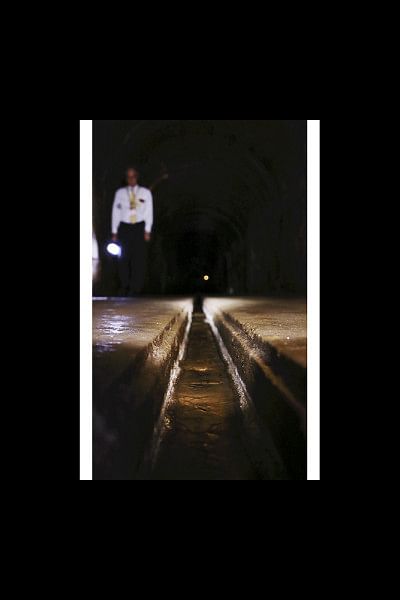
"I am merely an atom of iron in a magnet that clings to an enemy aircraft carrier, possessing neither personality, emotions or reason," he wrote. Tomorrow, another liberalist will depart from this earth."
The campus was requisitioned by the US military in September 1945. When Keios Mita campus in Minato Ward, Tokyo, was also destroyed in air raids, the university reportedly had trouble securing enough classrooms for its students. The Hiyoshi campus was returned to Keio in October 1949.
The Combined Fleet Specially created for the Sino-Japanese War and the Russo-Japanese War, the Combined Fleet was dissolved after each conflict. It was established on a permanent basis in 1933. Appointed by the emperor, its commanders-in-chief included such figures as Heihachiro Togo and Isoroku Yamamoto, who were popular and widely celebrated by the public. When the Pacific War began in December 1941, the Combined Fleet consisted of the 1st to 6th naval fleets and air fleets. However, it suffered a devastating loss in the Battle of Leyte Gulf in October 1944.
Guide to Hiyoshi campus You can reach Keios Hiyoshi campus by crossing Tsunashima-kaido street just outside the ticket gate of Hiyoshi Station on the Tokyu Toyoko Line and the Yokohama Municipal Subway Green Line. The approximately 220-metre street stretching from the entrance is lined with ginkgo trees, whose leaves turn a splendid yellow in autumn.
Keio Senior High School and Keio Futsubu Middle School are also located in Hiyoshi. The shopping street on the west side of the station - dubbed Hiyoura - is packed with students.
On the stations southwest side are the Minowa Doyato cave tombs, an archaeological site from the Kofun period (300-710) where su-e ware and other pottery have been unearthed.
Copyright: Asia News Network

 For all latest news, follow The Daily Star's Google News channel.
For all latest news, follow The Daily Star's Google News channel. 



Comments